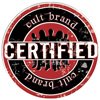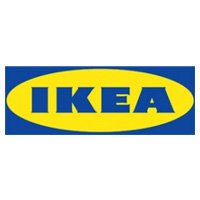Contents
- IKEA Quick Stats
- IKEA Profile Summary
- Images by Brand Lovers
- Brand Timeline
- Videos created by IKEA Brand Lovers
- Presentations about IKEA as a Brand
- Articles related to IKEA
- Web site(s) related to IKEA
- Brand Facebook Fan Page
| Certified Cult Brand | ||||
 | We have tracked businesses with unprecedented brand loyalty since 2001. A Certified Cult Brand is a designation we hold for brands that fulfill specific market criteria, including upholding the Seven Rules of Cult Brands. | |||
Quick Stats
IKEA was founded by Ingvar Kamprad in 1943.
There are 11,000 IKEA workers in America, and 120,000 around the world
IKEA’s designing process starts with determining the price
The IKEA Catalog is the world’s most distributed annual free publication — 191 million copies are printed in 56 editions and 27 languages
In 2009 660,100,000 people visited an IKEA store worldwide.
Globally, IKEA is the largest corporate donor to UNICEF.
As of October 2010, the chain has 313 stores in 38 countries
People are camping outside. Traffic jams are so severe that highway exits must be shut down. Traffic lights are rendered useless requiring police to direct traffic. Is it a new Star Wars film? No, it’s the opening of a new Ikea store.
Started in 1943 by Ingvar Kamprad to sell a random assortment of products that he could sell at a cheap price from his house, Ikea has grown into a multinational furniture store. Ikea’s rapid growth continues to be driven by a strong attention to what their customers want: contemporary products that are affordable and functional. This isn’t a concept that is integrated into an aspect of the business plan. It is the driving force behind all decisions. The products are simple in design but visually appealing; they are simple to build, eliminating the need to hire an installer. To sell a mug as cheap as possible, Ikea made it available in only two colors—blue and white—because the pigments were the cheapest. Rather than follow traditional outlets for furniture manufacturing, Ikea obsesses over finding the perfect fit between manufacturer, product, and price—when they needed bent wood arms for a chair, they turned to ski manufacturers.
This attention to cost conscious customers doesn’t stop at the products, but extends to other aspects of the customers’ lifestyles. Understanding that most New Yorkers don’t own cars as they are inefficient and not cost effective, when Ikea opened their Elizabeth, N.J. location right outside of New York, they offered free shuttle service between Port Authority and the store every half hour. For cost-conscious customers, such a trip would have otherwise been too expensive.
Knowing that functionality is a big part of their customers’ buying decisions, when Ikea was designing their Chicago store they didn’t only ask for customer input on what they wanted in an ideal store, they asked them to work alongside with designers in conceiving the final product. After it was finished, no one rated the experience as poor or fair, and 85% rated it as very good or excellent. Return visits increased dramatically.
Functionality differs between regions, and Ikea takes it into account when designing their products. They don’t just have people complete surveys to figure out what they want. They go into their homes and see the ways they live. Visiting people’s houses in Italy and the United States led to the understanding that Americans store more clothing in drawers. The result: deeper drawers for their American products.
This attention to incorporating what their customers want is not lost on the customers. In one forum message, a user identified as bcbaird commented, “I like the Ikea cabinets because the money you spend goes towards the things that count … and not the things that don’t.” And, the attention has paid off: from 1997 to 2005 Ikea doubled its market share and tripled its sales from $600 million to $1.7 billion to become the seventh largest furniture store in the United States.
1926 – The founder of IKEA, Ingvar Kamprad, is born in Småland, in the south of Sweden. He was raised on a farm called Elmtaryd, near the small village of Agunnaryd. Even as a young boy, Ingvar knew that he wanted to develop a business. He started by selling matches to neighbours from his bicycle. He found that he could buy matches in bulk very cheaply from Stockholm and sell them individually at a very low price but still make a good profit. From matches, he expanded to selling fish, Christmas tree decorations, seeds and later ball-point pens and pencils.
1943 – IKEA is founded by Ingvar Kamprad. In 1943, when Ingvar was 17, his father gave him a gift for succeeding in his studies. The gift was used to establish his own business. The name IKEA was formed from the founder’s initials (I.K.) plus the first letters of Elmtaryd and Agunnaryd, the farm and village where he grew up. IKEA originally sold pens, wallets, picture frames, table runners, watches, jewelery and nylon stockings—whatever Ingvar found a need for that he could fill with a product at a reduced price.
1945 – The first IKEA advertisements appear in local newspapers. When Ingvar Kamprad outgrew his ability to make individual sales calls, he began advertising in local newspapers and operating a makeshift mail order catalogue. He distributed his products via the county milk van, which delivered them to the nearby train station.
1947 – Furniture is introduced into the IKEA product range. The furniture was produced by local manufacturers in the forests close to Ingvar Kamprad’s home. The positive response was gratifying, and the line expanded.
1951 – The first IKEA furniture catalogue is published. The founder of IKEA saw the opportunity of becoming a furniture provider on a larger scale. He soon made the decision to discontinue all of the other products and focus directly on low-priced furniture, and the IKEA that we know today was born.
1953 – The furniture showroom is opened in Älmhult. The IKEA range focused to home furnishing products in the early 1950s. The opening of the showroom was an important moment in the development of the IKEA concept. For the first time customers could see and touch our furnishings before ordering. This came about as a solution to a problem. IKEA found itself in a price war with its main competitor. As both companies lowered prices, quality came at risk. By opening the showroom, IKEA could in three dimensions present its products with function, quality and low price. And people did just what IKEA had hoped: they wisely chose the products with the best value for the money.
1955 – IKEA begins designing its own furniture. There were several reasons for IKEA to start designing its own furniture. But what actually led to this—possibly our best move ever—was quite ironic. Pressure from our competitors caused suppliers to boycott IKEA. This reaction to our early success required us to begin designing our own furniture, and became the basis for future growth. Ultimately, this would lead to innovative design and improved function at lower prices. Then, by lucky inspiration, one early IKEA employee decided to remove a table’s legs so it would fit into a car, and to avoid transport damage. From that point on, we began to think in terms of design for flat packaging. Which led to even further reductions in price for our customers. A pattern had begun to establish itself at IKEA. Turning problems into opportunities.
1956 – IKEA begins testing flat packages. Designing products so that they can be packed flat and assembled by our customers greatly reduces their cost. This was obvious from the very first day we took the legs off a table and put it in a car. We can ship more items in one truck, less storage space is required, labour costs are reduced and transport damages are avoided. For the customer, this means lower priced products and easy transportation home. But all of this began carefully, one product at a time.
1958 – The first IKEA store is inaugurated in Älmhult. 6,700 square metres of home furnishings! At the time, it was the largest furniture display in Scandinavia.
1959 – Gillis Lundgren—the fourth employee at IKEA—designs TORE, possibly our biggest sales success ever. While visiting a kitchen manufacturer, he noticed the simple, practical storage ideas we use in our kitchens and had the inspiration to apply that same thinking throughout the home. As soon as he got back to Älmhult, he sat down and designed TORE.
The hundredth employee joins IKEA.
1963 – The first IKEA store in Norway opens outside Oslo. This was also our first store not located in Sweden.
Marian Grabinski, consul and architect, designs the MTP bookcase.
It was a contemporary classic, and spawned numerous imitators over the years. In building this and other wood products, IKEA forged good relations with Polish suppliers in the 50s and 60s. These relationships still provide the basis for many of our efforts to maintain prices at levels which the majority of people can afford.
1964 – ÖGLA chair is redesigned to fit the IKEA concept of form, function and price.
1965 – The IKEA store in Stockholm is opened. Thousands of people queued for the opening of our flagship store. The 45,800 square metre store has a circular design, inspired by New York’s Guggenheim Museum. The success created huge capacity problems in serving the customers. By opening the warehouse and letting people serve themselves, an important part of the IKEA concept was born.
1969 – The first IKEA store opens in Denmark. The arrival of particleboard makes its mark on IKEA during the 60s. This inexpensive, hard-wearing and easy to process material was a natural fit for IKEA. In 1969, the PRIVAT sofa was designed by architect Åke Fribryter. It had a particleboard base with a white lacquer finish, and brown floral cretonne covers by the textile artist Sven Fristedt. The straight lines, no-nonsense practicality and unbeatable low price were a tremendous success for the times.
1973 – The first store outside Scandinavia is opened outside Zurich, Switzerland.
Its success paved the way for a rapid expansion in Germany, which is the largest IKEA market today.
1974 – The first IKEA store opens in Munich, Germany. SKOPA chair is designed by Olle Gjerlöv-Knudsen and Torben Lind. Modern plastics give designers lots of new ways to construct good furnishings. But choosing the right production method becomes an important question in the design process. When it came to choosing a manufacturer for our SKOPA chair, the answer was wonderfully simple, even if it did cause a few raised eyebrows. After months of fruitless searching, we took another long look at the shape of the chair and hit upon the idea of asking a manufacturer of plastic bowls and buckets to lend us a hand. Neither form or function were compromised by this unorthodox solution. On the contrary, the final lines were even cleaner.
1975 – The first IKEA store in Australia opens.
1976 – The first IKEA store opens in Canada.
1977 – The first IKEA store in Austria opens.
1979 – The first IKEA store opens in the Netherlands.
1980 – The KLIPPAN sofa appears.The same year that the United Nations declared “The Year of the Child” , IKEA declared “The Year of the Children’s Living Room.” Our KLIPPAN sofa was tough enough to soak up the kind of punishment only children know how to dish out, yet soft enough to fall asleep on when bedtime stories grow too long. The entire cover was removable for machine washing.
1981 – The first IKEA store opens in France.
1982 – LACK shelves are born.
1983 – The six-thousandth employee joins IKEA.
1984 – The first IKEA store in Belgium is opened. The Stockholm range of furnishings appears. IKEA designed a series of high quality furnishings using some of our favourite materials—birch wood, leather and cretonne. Our STOCKHOLM range had everything you would expect of classic high quality, except the high price tag. STOCKHOLM was a winner of the Excellent Swedish Design award.
1985 – The first IKEA store opens in the USA. At first, we weren’t sure the USA needed IKEA. After all, what could we bring to the country that has everything? But we discovered there is a need everywhere for useful, attractive home furnishings at prices for every wallet.
1987 – The first IKEA store in the UK opens.
1989 – The first IKEA store opens in Italy.
1990 – The first IKEA stores in Hungary and Poland opens.
1991 – The first IKEA stores opens in Czech Republic and United Arab Emirates.
1993 – IKEA reaches 114 stores in 25 countries.
1994 – KUBIST storage units appear.This was one of the first IKEA products built with board-on-frame construction. We used a technique for door manufacturing to create inexpensive, sturdy and lightweight storage units. To make beautiful, functional and affordable products for the majority of people, IKEA designers try to carry out product development on the shop floor. Working with existing manufacturers of board-on-frame doors, IKEA saves money. In this case, old factories in Poland were retooled to make parts for KUBIST and other IKEA products.
1995 – DAGIS kids’ chair, by Richard Clack, is born. He obviously took a long, hard look at kids before he designed it. Children do not have sharp corners, they are fairly soft but can stand up to a little rough and tumble now and again. They are cheeky but cute and they just love the hurly-burly of childhood. In this spirit, he designed his chair for children. And then he added one little improvement. As far as we know, children do not yet come in stackable versions to save space and facilitate moving them. DAGIS, on the other hand, does.
1996 – The first IKEA store opens in Spain.
1997 – IKEA introduces Children’s IKEA. IKEA has always provided furnishings for the entire family. But since kids are the most important people in the world, IKEA decided to put them in the spotlight. We worked with two groups of experts to develop products. Child psychologists and professors in playing helped us develop things that are good for kids’ motor skills, social development and creativity. Then the other experts, kids, helped us choose the winners. Play areas, children’s room settings, baby areas, special meals in the restaurant and still more play areas make IKEA a place kids love to visit.
The first version of www.IKEA.com launches.
1998 – IKEA opens its first store in China.
1999 – IKEA numbers 53,000 co-workers across a global network of over 150 stores in 29 countries on four continents. IKEA founder Ingvar Kamprad initiated the Big Thank You Event as a millennium reward to the many co-workers within the IKEA group. The total of all sales worldwide on this special day was given to the employees. The goal for the day was high, but the actual result was higher—approximately 187 million NLG. Every co-worker, from the snack bar staff and stock clerks to the president, got the same bonus. For most, this bonus was more than a month’s pay. It turned out to be a great way to thank the hard working IKEA co-workers for contributing to the success over the last millennium. And this is only the beginning.
2000 – The first IKEA store opens in Russia.
2006 – The first IKEA store opens in Japan
2009 – Ikea iPhone app available for download.
 |
 |
 |
 |
 |
 |
 |
 |
 |
 |
 |
 |
 |
 |
 |
 |
Videos Created By IKEA Brand Lovers
Presentations About IKEA As a Brand
Ikea: How the Swedish Retailer Became a Global Cult Brand
IKEA Brings Fun Shopping to Your Home
IKEA’s Official Site
http://www.ikea.com
IKEA Fan Site
https://www.ikeahackers.net
Browse Cult Brands | ||||
 |  |  |  |  |
 |  |  |  |  |
 |  |  | ||

